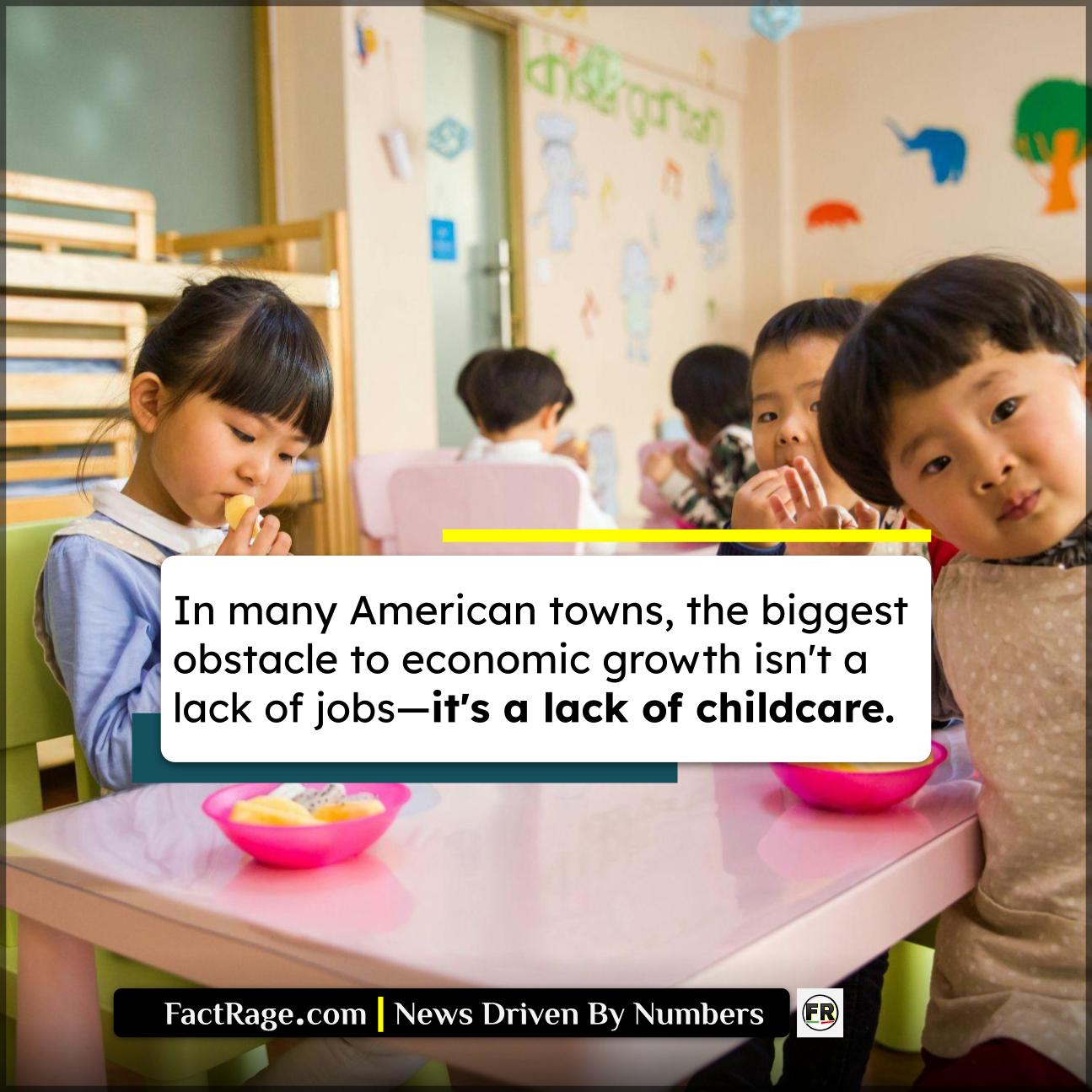OAK RIDGE, OH – For many parents and business owners here, the American childcare crisis isn’t a political debate—it’s a daily economic reality that is shuttering storefronts and sidelining workers.
- Defining a ‘Childcare Desert’ – A childcare desert is a community with an insufficient supply of licensed childcare. More than half of all Americans live in one, where there are either no providers or more than three children for every available slot.
- The Economic Ripple Effect – A lack of childcare options directly impacts local economies by reducing labor force participation, particularly among mothers. U.S. Chamber of Commerce Foundation data suggests childcare issues cost states billions annually in lost tax revenue and economic activity.
- An Unsustainable Financial Model – Parents face steep costs, with average infant care in Ohio exceeding $10,500 annually. Meanwhile, low wages for childcare workers contribute to staffing shortages and center closures, as providers struggle with high overhead and thin profit margins.
The signs of the crisis in this small Ohio town are subtle but persistent. It’s in the “Help Wanted” sign that has been in the window of the Main Street diner for six months. It’s in the hushed conversations between parents at the only playground, trading tips on finding a reliable babysitter for a few hours. This is the ground-level reality of a national problem that has left communities like Oak Ridge in a quiet state of economic paralysis.
What ‘Childcare Desert’ Means for a Community

Oak Ridge is, by definition, a childcare desert. According to data from the Center for American Progress, which defines the term, this town of 3,000 has only one licensed childcare center with 40 slots and a handful of smaller in-home daycares. With an estimated 250 children under the age of five, the ratio of children to available spots is starkly imbalanced.
“It’s not a choice; it’s a math problem,” says Sarah Jenkins, a 32-year-old medical assistant and mother of two. “My husband and I both have to work. We were on the waitlist at the center for a year before our oldest got in. For our youngest, we rely on my mother-in-law, but she’s almost 70. If she gets sick, one of us has to call off work.”
This “math problem” extends to local employers. The owner of the Main Street diner, who asked to remain anonymous to speak freely about staffing, said his applicant pool has shrunk dramatically. “I’ve had three people in the last year tell me they wanted the job but couldn’t take it because they couldn’t find daycare,” he explains. “You can’t run a business if people can’t come to work.”
The Financial Bind for Parents and Providers
The core of the issue is a broken financial model. For parents in Ohio, the cost of quality childcare is formidable. Data from the Economic Policy Institute shows the average annual cost of infant care is $10,545, consuming a significant portion of a median family’s income. This forces a difficult calculation: does the income from a second job outweigh the cost of care required to work it?
Simultaneously, childcare providers operate on razor-thin margins. High costs for insurance, rent, and supplies are paired with the need to keep prices from becoming completely unattainable for parents. The result is chronically low wages for staff. According to the Bureau of Labor Statistics, the median wage for a childcare worker in Ohio is just over $13 an hour.
“I loved the children, but I couldn’t afford to live,” says a former childcare worker from a neighboring town who left the industry last year. “I was making less than the cashiers at the grocery store, but I was responsible for the safety and development of eight toddlers. The stress and the low pay just weren’t sustainable.” This dynamic fuels high turnover and makes it nearly impossible for existing centers to expand or for new ones to open.
Why Past Solutions No Longer Work Here
Decades ago, communities like Oak Ridge often relied on informal networks. Extended families lived close by, and it was more common for one parent, typically the mother, to stay home. Today, economic pressures mean most families require two incomes to stay afloat, and a more mobile society means grandparents or other relatives may live hundreds of miles away.
Local leaders and business owners are aware of the problem, but solutions are scarce and complex. Some discussions have revolved around businesses pooling resources to support a new center, but the upfront cost and liability are significant hurdles. Without a major shift in the economic structure of childcare, communities like Oak Ridge are left waiting. The demand from parents and employers is there, but the supply of affordable, quality care is not.









